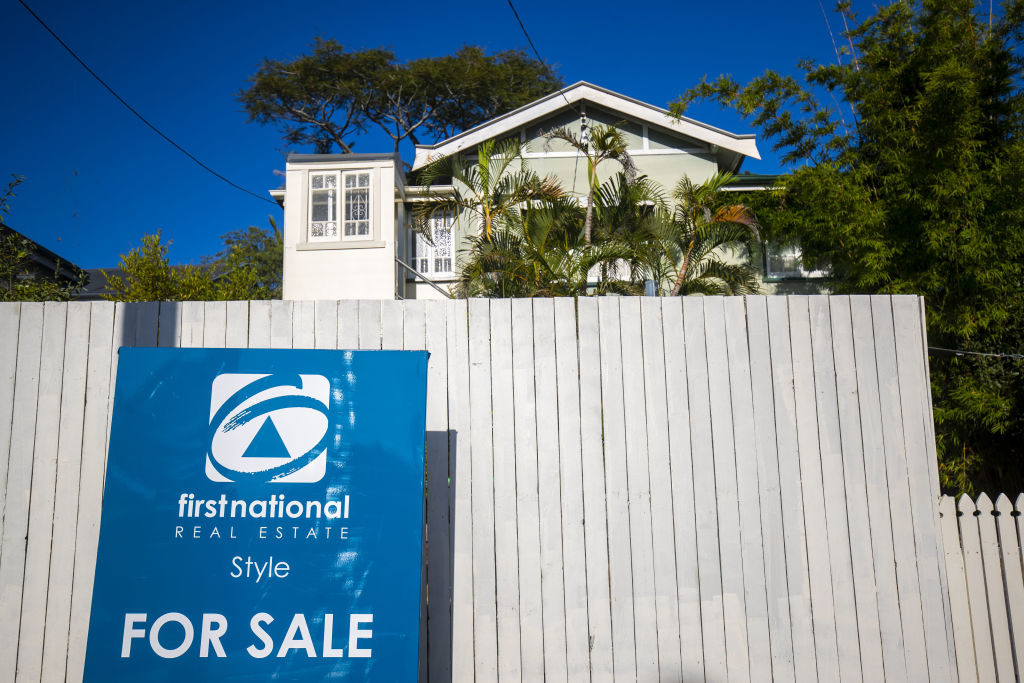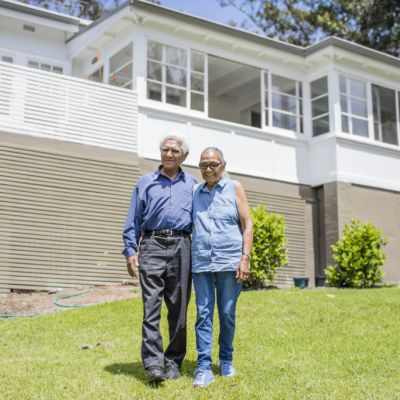What is a reverse mortgage, and should you get one?

If you’re an Australian retiree with cash flow issues and no desire to downsize, you might have looked into a reverse mortgage, a style of loan that allows you to tap into the wealth you’ve got in your home.
Reverse mortgages have grown steadily in popularity since the Global Financial Crisis in 2007-2008, when Australians over 60 started looking for alternative streams of income. A rapidly ageing population means that we’re likely to see a continuation of that growth.
A reverse mortgage loan can be appealing to older Australians who need extra money, whether it be to travel, help their loved ones with financial support, or simply deal with the burgeoning cost-of-living crisis. But it does come with some pitfalls. Discover what a reverse mortgage is, and how it works, as well as some of the pros and cons of reverse mortgage loans, so you can make a decision that’s right for you and your financial situation.
What is a reverse mortgage?
A reverse mortgage is a financial product that allows you to access the equity you have in your home. Using your home as security, you can borrow money in the form of a loan, lump sum or regular income stream.
A reverse mortgage is typically used by older Australians who’ve lived in their home for a long time and built up some equity (what your home is worth, minus what you owe on it). Then, they can use that equity to borrow cash without having to make regular repayments like a typical home loan.
In other words, this type of “home equity release” is a way of using some of the money you’ve made on your home without having to sell it. Home equity release can also include “home reversion schemes” and “shared appreciation mortgages”.

How does a reverse mortgage loan work?
A reverse mortgage works differently to a regular home loan (where you borrow money to buy a property, and then pay down the loan over time).
Here’s how it works:
- If you’re aged 60 and over, a lender can allow you to borrow around 15-20 per cent of your home equity. You can spend the cash on whatever you like while you stay in your home. Usually, you’re allowed to borrow more as you age.
- You don’t have to show proof of income and you don’t have to make repayments for as long as you live in your home. That’s because interest charged on the loan compounds and is added to the overall balance. You repay the loan when your home is sold.
- You can take the money you borrow in the form of lines of credit, a regular income stream, a lump sum, or a combination of all three.
- Though you don’t have to make regular repayments on a reverse mortgage loan, you’ll still be charged interest and fees. Then, the loan has to be repaid when your home is eventually sold – often when you pass away or move into aged care.
Why use a reverse mortgage?
Reverse mortgage loans appeal to retired Australians who don’t have a lot of income or cash in the bank but do have value in their property. Maybe they want to renovate, go on holiday or pay for everyday living expenses without having to resort to selling a home they love.
Demand for reverse mortgages has grown gradually since the Global Financial Crisis gutted the nest eggs of many Australian retirees, who are likely to have much of their wealth tied up in property.
Who is eligible for a reverse mortgage in Australia?
Whether you’re eligible for a reverse mortgage loan depends on the lender and your circumstances. Typically, you need to be aged 60 or older, you need to live in the property, and that property needs to meet a set of conditions identified by the lender. Some lenders also require you to have earned a certain level of equity in your home.
Reverse mortgage pros and cons
There are advantages and disadvantages to a reverse mortgage loan, so you should definitely seek professional advice before applying to a lender. Qualified and independent finance professionals can tailor their advice to your specific circumstances.
But here’s a general list of reverse mortgage pros and cons:
Pros
- Stay in your home
- Access more cash to cover expenses, renovate and more
- Benefit from the value of your home while you’re in retirement
- No repayments required
- Choose how you want to receive cash from the loan
- Repay the loan when you want
Cons
- The interest rate can be higher than a standard mortgage
- Interest and ongoing fees build up over time
- Could affect your Age Pension eligibility
- Could affect what you leave for your family when you die
- Could reduce the amount of income you have if you want to downsize or when you move to aged care
- Could negatively affect people who live with you

The potential benefits of a reverse mortgage
The biggest benefit of a reverse mortgage loan is that you don’t have to sell your home to take one out. A reverse mortgage allows you to stay in your home while you access the cash you need. It’s also relatively flexible in terms of what you’re allowed to do with the money and how you receive it, whether it’s through lines of credit, regular income payments or a lump sum.
Proponents of reverse mortgages say that the industry is heavily regulated under the National Consumer Credit Protection Act. For example, you also can’t wind up owing the lender more than your home is worth. That’s because the government requires all loans taken out after September 18, 2012, to have negative equity protection.
The potential disadvantages of a reverse mortgage
Reverse mortgage loans come with interest rates and fees that can compound over time, reduce your overall equity, and affect your ability to afford things in the future, such as your health and aged care expenses.
The government’s MoneySmart website warns that a reverse mortgage could impact your eligibility for the Aged Pension.
Also, it’s worth considering what will happen to you and your family when you eventually have to leave the property – maybe to move to an aged care home – or pass away. In that event, paying off the loan could reduce the amount of money you’re able to leave your loved ones.
How do you get a reverse mortgage?
You need to check if you meet the eligibility criteria, research various lenders and seek independent professional advice before getting a reverse mortgage loan (as in, don’t just ask the lender who’s trying to sell you a loan whether you should get one). MoneySmart has a helpful guide on where to find financial advice.
If you decide to pursue a reverse mortgage loan, you’ll need to apply to a lender, and undergo a property valuation and credit check. Make sure you understand all the conditions of the loan before locking anything down.
How much does a reverse mortgage cost? It depends on how much money you borrow, the length of the loan and the interest rate and ongoing fees you’ll be expected to pay.
Not sure if a reverse mortgage is right for you? You can use ASIC MoneySmart’s reverse mortgage calculator to see how much you can borrow and what it will cost.
We recommend
We thought you might like
States
Capital Cities
Capital Cities - Rentals
Popular Areas
Allhomes
More
- © 2025, CoStar Group Inc.








